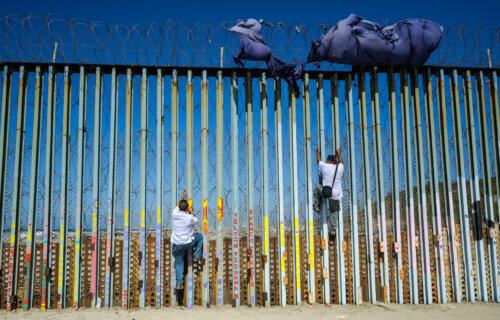SAN DIEGO — The border wall between the U.S. and Mexico in Southern San Diego has seen a staggering five-time increase in the amount of serious injuries, according to new report. What’s behind this undeniable surge? Researchers at the University of California, San Diego attribute their findings to recent height extensions.
Between 2016 and 2019, UC San Diego Health alone documented 67 cases of trauma-related incidents due to falls at the border wall. That number increased to 375 between 2019 and 2021. Notably, fatalities increased as well. Not a single death was recorded prior to 2019, but there have been 16 since.
Researchers say that since 2019, the border wall has risen from a range of eight and 17 feet to 30 feet.
“The height increase of the border wall along the San Ysidro and El Centro sectors was touted as making the barrier ‘unclimbable,’ but that has not stopped people from attempting to do so with consequential results,” says first study author Amy Liepert, MD, medical director of acute care surgery at UC San Diego Health, in a statement. “This is an unseen public health crisis happening right now and it has significantly affected major local health care providers in San Diego.”
This research was retrospective, with study authors calculating border wall fall admissions between January 2016 to December 2021. Additionally, data pertaining to hospital mortality, the overall severity of injuries, time spent in the hospital, and inflation-adjusted hospital costs were collected.
“Additional capacity and associated costs were not accounted for in the federally appropriated funds to reinforce and heighten the border barrier system,” Dr. Liepert explains. “Hospital costs for border wall-injured immigrants at UC San Diego Health alone are estimated to be approximately $13 million between 2019 and 2021.”
Many patients who fell from the wall incurred serious brain trauma, facial injuries, and complex fractures of their extremities or spine. A significant portion also needed ICU care and multiple surgeries. Unfortunately, many patients didn’t have health insurance or residency status, meaning they were not eligible for rehabilitation facilities or post-discharge physical therapies.
“This is a local public health crisis that has worsened trauma center bed capacity, resulting in staff shortages and has taxed our extremely dedicated health care professionals,” adds Dr. Jay Doucet, division chief of trauma and surgical critical care at UC San Diego Health. “It is also a humanitarian crisis in which people are being severely injured or dying at the border, and because this is happening it is impacting available access to trauma care for San Diegans as well.”
In conclusion, Dr. Liepert says future decisions regarding border wall alterations should consider the humanitarian consequences, risk of serious injury, and potential impact on local health care systems.
The study is published in JAMA Surgery.

So when the injured get on U.S. soil they can head for the nearest ER or when they get there medicaid card they can go wherever they want for free. They can also get a lawyer and sue for damages, Right? Better benefits than being a U.S. citizen.
A series of machine gun nests along the wall would greatly increase border security.